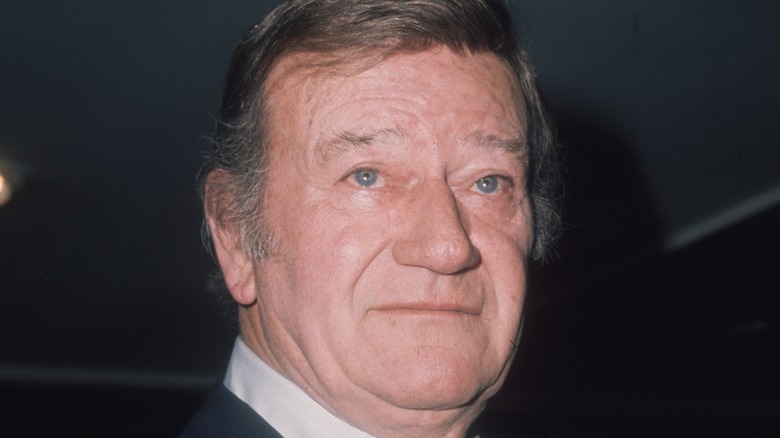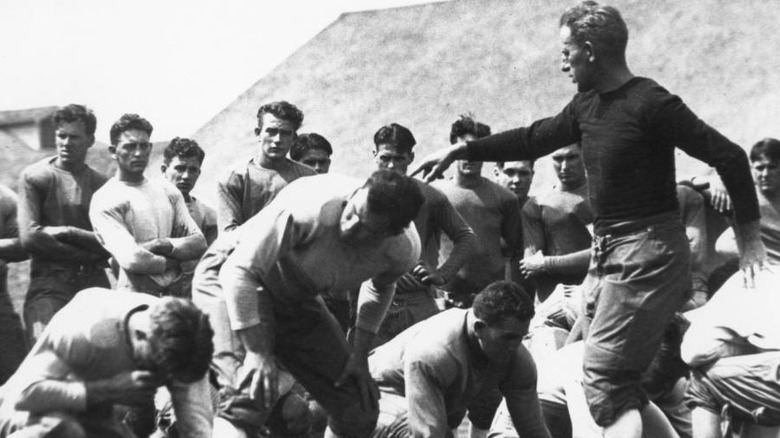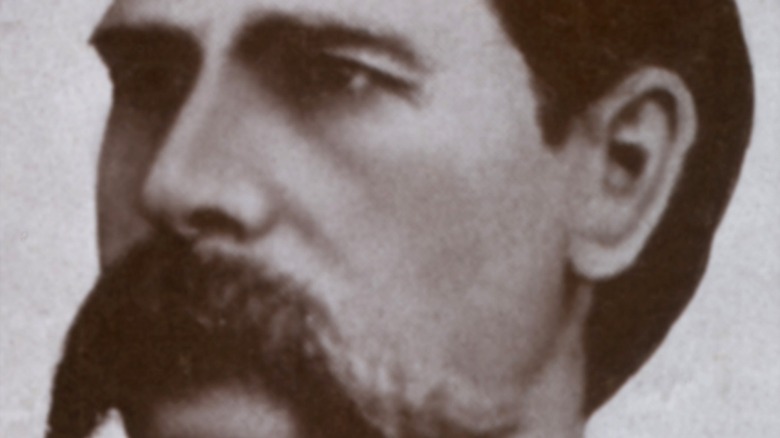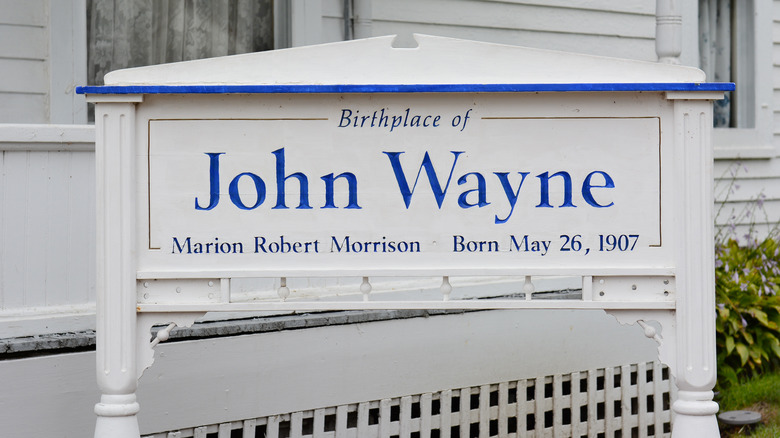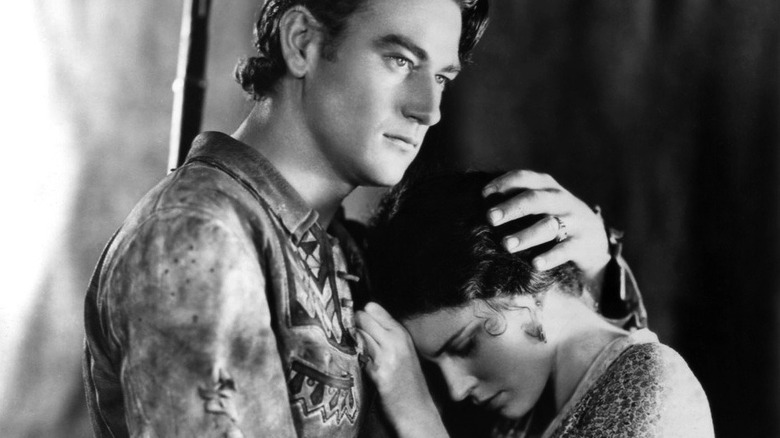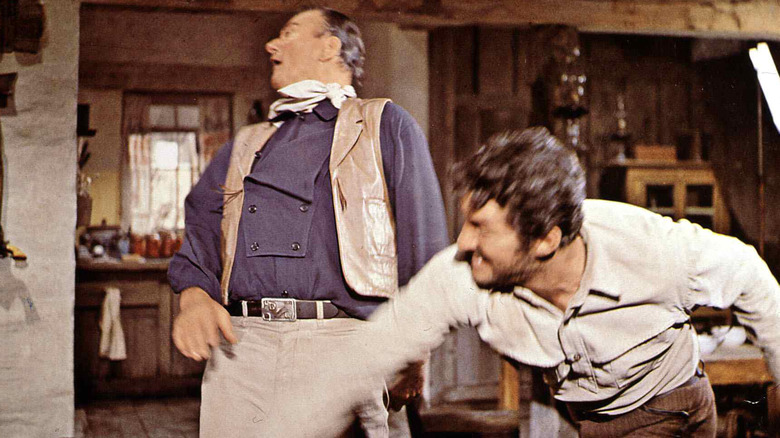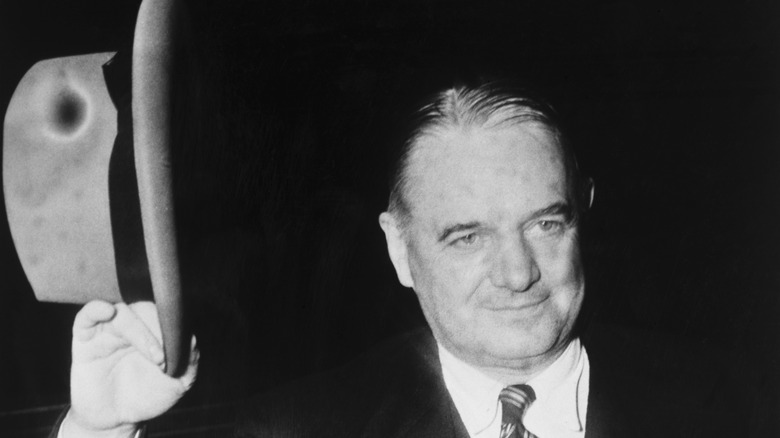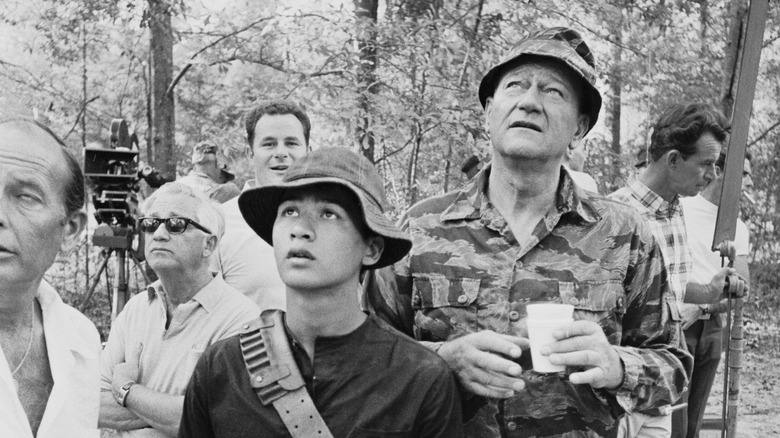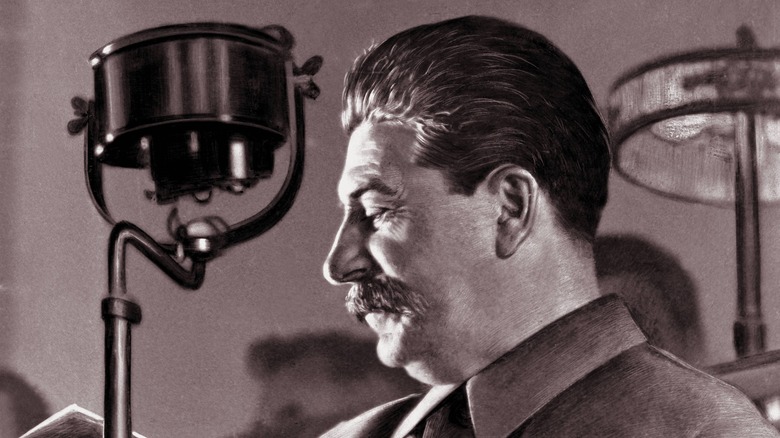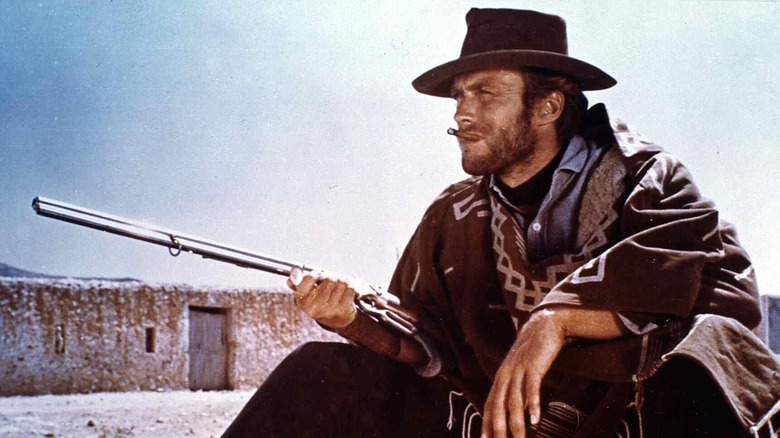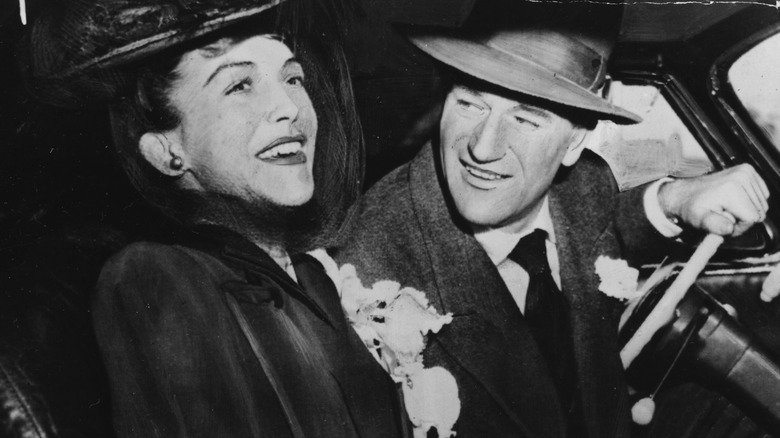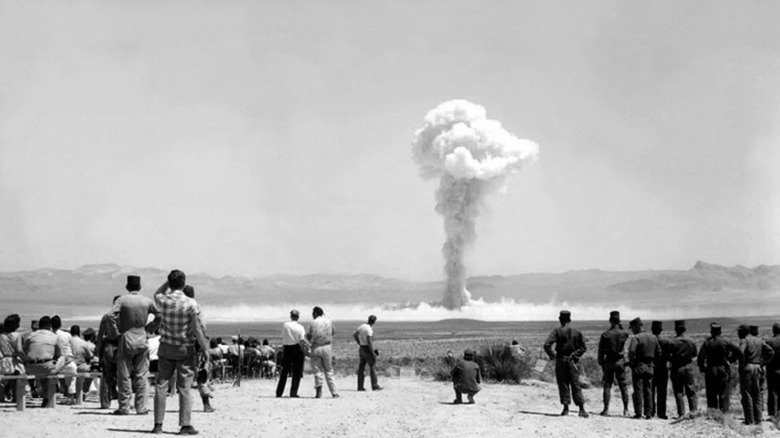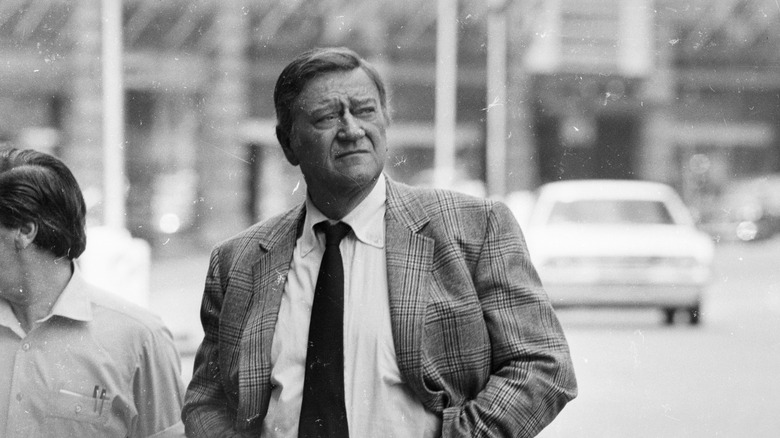Things You Didn't Know About John Wayne
The actor known as John Wayne was born in 1907 in Winterset, Iowa, to Clyde Leonard Morrison and Mary "Molly" Alberta Brown. Wayne's family moved to California when he was young, where he had a typical childhood. But he grew up to star in more movies than any other actor in the sound era. Among them were "Stagecoach," which paved Wayne's way to stardom, and 1969's "True Grit," which would win him an Academy Award for Best Actor.
John Wayne died in 1979, but he remains one of the world's most well-known actors. He personified the Wild West in a way that nobody else could ever match and formed the basis for much of the modern cultural identity of the United States. He so strongly embodied the concept of "American-ness" that Emperor Hirohito of Japan and Nikita Khrushchev of the USSR both specifically requested meetings with him when they visited the US in 1975 and 1959, respectively.
Read on for some surprising facts about America's favorite cowboy!
He might have been a lawyer if not for a bodysurfing accident
John Wayne was a model student in high school, getting good grades, playing football, and participating in extracurricular activities like the debate team. He was even president of his senior class in 1925. When it was time to go to college, Wayne applied to the U.S. Naval Academy but was rejected. He ended up going to the University of Southern California, where a football scholarship paid his entire $280/year tuition and covered one meal a day, five days a week. He was majoring in pre-law, which makes perfect sense given his background in debate. Unfortunately, he broke his collarbone in a bodysurfing accident and lost his scholarship. Without that, he couldn't afford to remain in school and had to drop out soon after beginning his junior year.
Thankfully, director John Ford owed football coach Howard Jones a favor, and the coach called it in for the young John Wayne. Ford hired Wayne as a prop boy and extra, and thus began a life-long career in film.
Wyatt Earp inspired his acting
There is an oft-repeated myth that John Wayne met legendary gunslinger Wyatt Earp on a movie set in 1928. In this myth, the young Wayne formed a close bond with the 80-year-old former sheriff and even became one of his pallbearers when Earp died in 1929. Sadly, it seems that this myth never happened, and Wayne likely never even met Wyatt Earp, though they did share a connection with silent movie star Tom Mix.
Even though they never met, Earp influenced John Wayne's perception of what it meant to be a cowboy and therefore informed much of his acting. Earp lived by a code that Wayne would go on to adopt for his roles in Westerns. For example, Wayne demanded that a particular scene in "The Shootist" be re-edited to remove the implication that his character would shoot a person in the back. This was an act that went against Wyatt Earp's code. Similarly, Wayne insisted that his movie characters would never shoot an unarmed man.
Wayne didn't come up with his own stage name
Wayne's birth name was Marion Robert Morrison, and that was the name he was known by when he played college football and later when he started his acting career. He also went by "Duke," a nickname picked up from a childhood friendship with his Airedale Terrier, also named Duke. Some people referred to Wayne and his dog as "Little Duke" and "Big Duke," and that name stuck.
However, when choosing a stage name, the studio had something else in mind for him. His legal name sounded too feminine, so director Raoul Walsh suggested the name of a Revolutionary War general, Anthony Wayne. Fox Studios executive Winfield Sheehan rejected this name, saying it sounded "too Italian."
Finally, Walsh came up with "John Wayne." Thankfully, everyone involved was on board with this alias, so "John Wayne" stuck. It is said that Wayne was not even present for this discussion and was not given the option to offer his input. Perhaps if he had, he would have chosen to call himself "Duke," after his beloved dog.
After his first big film failed, he only got obscure roles
John Wayne's first big break was in a film called "The Big Trail," directed by Raoul Walsh. It was an immense undertaking, costing about $2 million and utilizing 20,000 extras and thousands of cows, horses, and buffalo. The film was intended to commemorate the centennial of the Oregon Trail. It was shot on 70mm film, a technology that could only truly be enjoyed in a tiny number of theaters. Due to the limits of the majority of theaters, most people did not get to see the film in its full glory, and it was a box office flop.
This massive failure, though not Wayne's fault, tainted his career for the next decade. Wayne faded back into relative obscurity and acted in various films created by the so-called "Poverty Row" studios of the time. Poverty Row referred to small, B-movie studios that churned out low-budget movies with no-name actors in the first half of the 20th century. Wayne appeared in approximately 80 of these low-budget films before getting his second crack at the big time with "Stagecoach" in 1939. This time, his fame would stick.
He innovated a new type of Hollywood fight scene
Modern movies owe a lot to John Wayne in terms of fight scenes. Before he came along, the expectation was that the hero always fought cleanly and gallantly. Wayne changed that. "The hero could only knock the villain down politely and then wait until he rose," Wayne said. "I changed all that. I threw chairs and lamps. I fought hard, and I fought dirty. I fought to win." This made the fights more believable and his characters less squeaky-clean and more interesting.
Wayne also invented a type of punch that was particularly well-suited for film. In it, he would dramatically wind his fist up and punch in a big, wide arc that would appear to knock both puncher and target off balance. Additionally, the way that he would position himself relative to the camera would ensure that the audience could see the whole action clearly, in all its violent glory.
He was a spy (sort of)
John Wayne did not fight in World War II, which he regretted for the rest of his life. He did, however, apply to serve in the Office of Strategic Services (the OSS, precursor to the CIA.) The OSS was somewhat known for its wide array of strange recruits. Director William Donovan employed aristocrats, pro wrestlers, mafia men, and celebrities like chef Julia Childs. Donovan was quoted as saying, "I'd put Stalin on the OSS payroll if I thought it would help defeat Hitler."
It appears that John Wayne did not officially enlist in the OSS, but he assisted them nonetheless. Wayne was touring with the USO Show in the South Pacific between 1943 and 1944 when William Donovan asked him to check up on General Douglas MacArthur and his staff. The OSS felt that MacArthur might be hindering the war effort in the South Pacific, and Wayne was tapped to determine whether this was true. Donovan later awarded Wayne an OSS Certificate of Service for his efforts.
He made the only movie in support of the Vietnam War
The Vietnam War was highly criticized in the United States, and most films about the conflict came down against it. John Wayne was notoriously super patriotic, perhaps due to the guilt he felt for not fighting in World War II. He wanted to make a film supporting the Vietnam War and wrote to President Lyndon B. Johnson to present his idea. The script was based on a novel called "The Green Berets," written by Robin Moore. The US government allowed Wayne to use military props and bases in exchange for having the final say on the script. They would make extensive changes, leaving the story almost entirely different from the novel on which it is based.
When the film was released, Roger Ebert called it "propaganda." He gave it zero stars and claimed it was offensive to both supporters and detractors of the war. This was a belief echoed by other movie critics. Despite the poor critical response, the movie was popular among moviegoers and a hit at the box office.
Joseph Stalin called for his assassination
According to a book titled "John Wayne — The Man Behind the Myth" by Michael Munn, John Wayne was so outspoken against communism that he made Joseph Stalin's hit list.
Wayne was certainly on Stalin's radar. The dictator was known for his love of films, and Westerns in particular. He often enjoyed John Wayne movies, but it seems to have been somewhat of a guilty pleasure as he believed that Wayne was a threat to the communist cause.
According to Munn, the FBI had uncovered a KGB plot to assassinate Wayne in the early 1950s. When alerted, Wayne rejected FBI protection and claimed that he would take care of it. He worked with scriptwriter Jimmy Grant to kidnap the assassins and stage a mock execution to scare them off. This information is all hearsay, but given how paranoid the Soviet dictator was, it seems plausible.
Allegedly, Nikita Khrushchev canceled the order for Wayne's death in 1953.
He didn't like Clint Eastwood
John Wayne and Clint Eastwood are perhaps the two best-known actors in the Western genre, but they came from two distinct periods in the genre's history. Wayne rose to fame when Westerns represented black and white morality, and nobody questioned the nobility of the white man's reasons for heading west. Manifest destiny was viewed as a positive thing, and there was no criticism of white encroachment on tribal land. Newer Westerns, of which Eastwood was the poster boy, were darker and morally ambiguous.
In the early '70s, director Larry Cohen tried to combine the two eras of Westerns in a film called "The Hostiles." He wanted John Wayne and Clint Eastwood to star in the movie together. Eastwood agreed, but Wayne immediately turned down the role. Eastwood made a second try at convincing him but was again rebuffed, this time in the form of a letter. In the letter, Wayne told Eastwood exactly why he wasn't interested in being in the film, and it was because he hated Eastwood's most recent movie, "High Plains Drifter." Wayne was unhappy that the movie criticized the Old West and wanted nothing to do with a project that would likely take the same critical stance. Wayne felt that Westerns should continue to present a positive view of American expansion. That wasn't something that Eastwood was particularly interested in doing.
One of his wives tried to shoot him for cheating on her
John Wayne was a bit of a ladies' man. He was married three times and had multiple mistresses over the years. By all accounts, the most tempestuous of his relationships was his marriage to his second wife, Esperanza Baur Diaz.
The pair met in 1941 in Mexico City, where Wayne was vacationing. He was still married to his first wife at the time, but after their marriage ended in 1945, Wayne and Baur were wed. Their relationship was full of drama from the very beginning. "Our marriage was like shaking two volatile chemicals in a jar," Wayne said. He also described her as a "drunken partygoer who would fall down and then accuse him of pushing her."
Baur accused Wayne of having an affair with his "Angel and the Badman" co-star, Gail Russell. Both Russell and Wayne denied the affair, but Baur didn't buy it. Wayne came home late after filming wrapped up and found Baur drunk and angry. She reportedly shot at him as he walked into the house. Needless to say, the marriage ended in divorce, though not until years later. Apparently, being shot at was not a dealbreaker for The Duke.
He may have been killed by nuclear fallout
While Wayne was in Utah filming "The Conqueror," a movie about Genghis Khan, the U.S. government was testing atomic bombs nearby. The tests were conducted in Nevada at a site chosen because the nuclear fallout would blow away from Los Angeles and Las Vegas and toward more rural land in Utah. While the government assured the actors and crew that they were safe 100 miles from the bombs, this did not turn out to be true. While filming, the Geiger counter they kept on the set was going off so loudly, Wayne thought it was broken.
Years later, a large percentage of the local people were diagnosed with various types of cancer and were given the nickname "the downwinders" because of their unfortunate location downwind of the nuclear fallout. Unfortunately, many of those who worked on "The Conqueror" suffered similar fates. Sadly, 91 of 220 cast and crew members eventually got cancer. One of those people was John Wayne.
Wayne was diagnosed with lung cancer in 1964 and had to have one of his lungs removed. He was declared cancer-free after that but died of stomach cancer in 1979. Was it the radiation that killed him? It was probably one of the factors, but like many people of his era, Wayne also had a serious smoking habit. Cancer is caused by many factors, and it's usually hard to pin down just one, but being dusted with nuclear fallout certainly couldn't have helped.
He would only play roles that supported his tough guy image
John Wayne kept a tight hold on his image by making sure that the roles he played lined up with the public persona he wanted to portray. He only accepted roles that followed certain guidelines and demanded script revisions if his character did something he didn't agree with.
Wayne preferred simple characters with simple, understandable motivations. Moral ambiguity is something that he actively avoided. His characters had to be "real men" with their own strict code of ethics. It was important to Wayne that none of his characters appeared weak or cowardly, and that they would always face challenges head on. "As a man, you can be scared, but you can't be a coward," Wayne said. This idea of manhood fit neatly with Wayne's conception of the Wild West, in which brave, righteous men fought their way across the frontier to secure land for their families.
